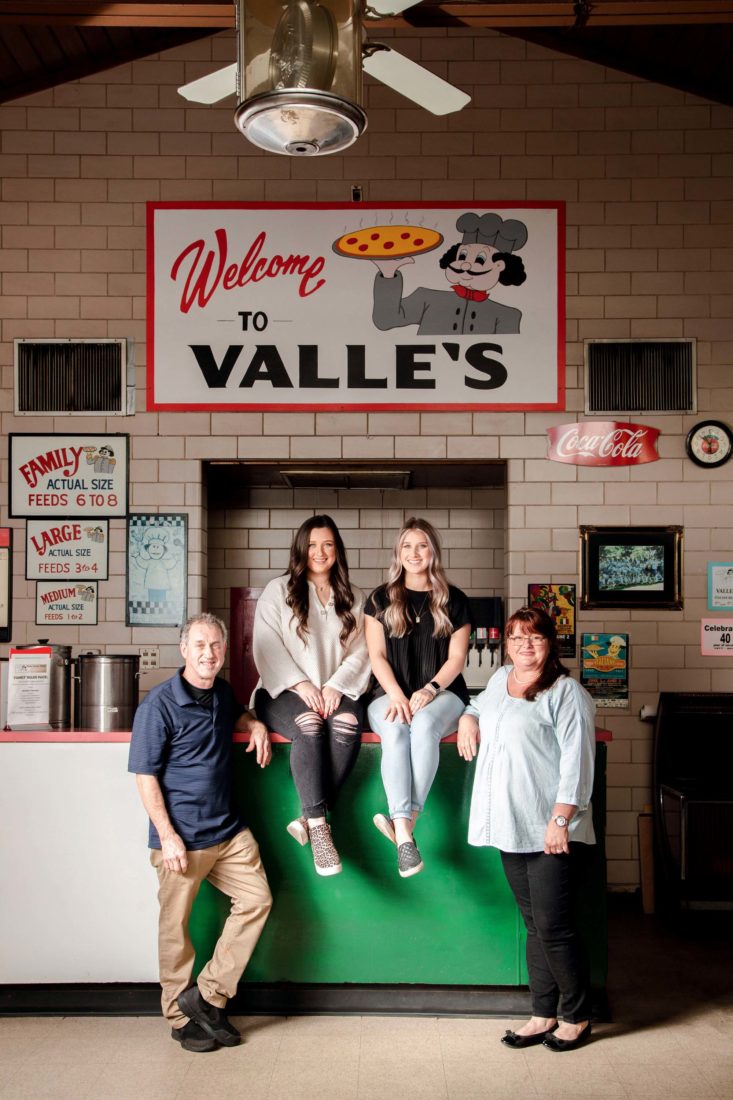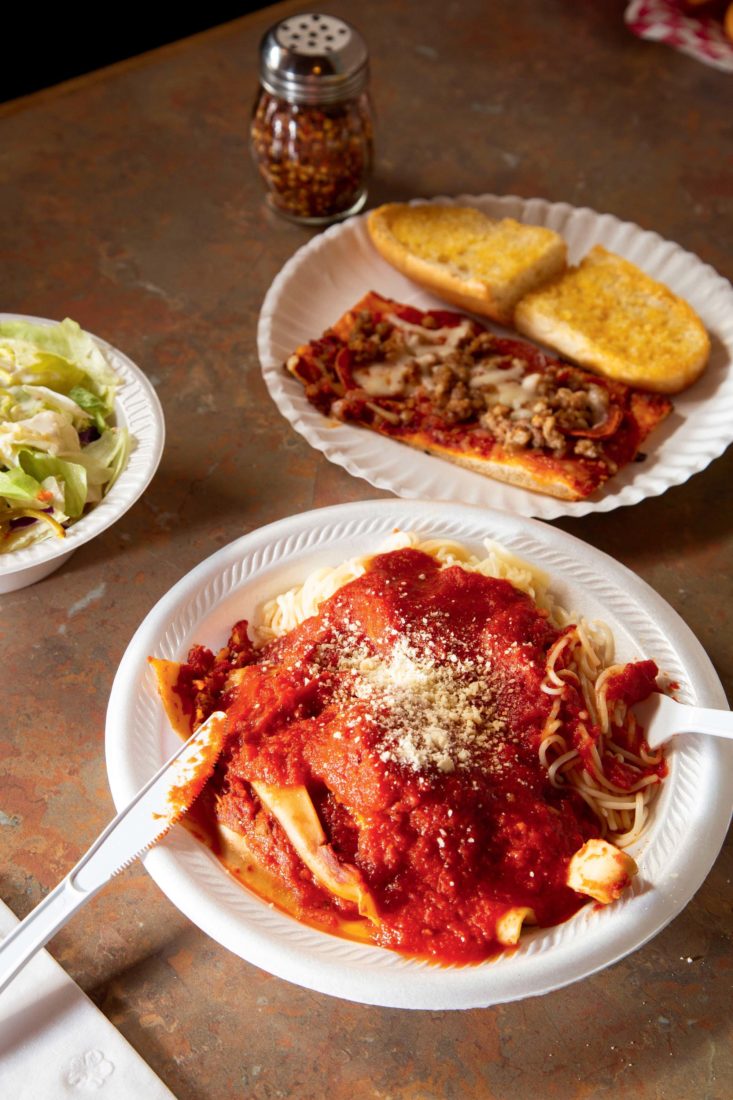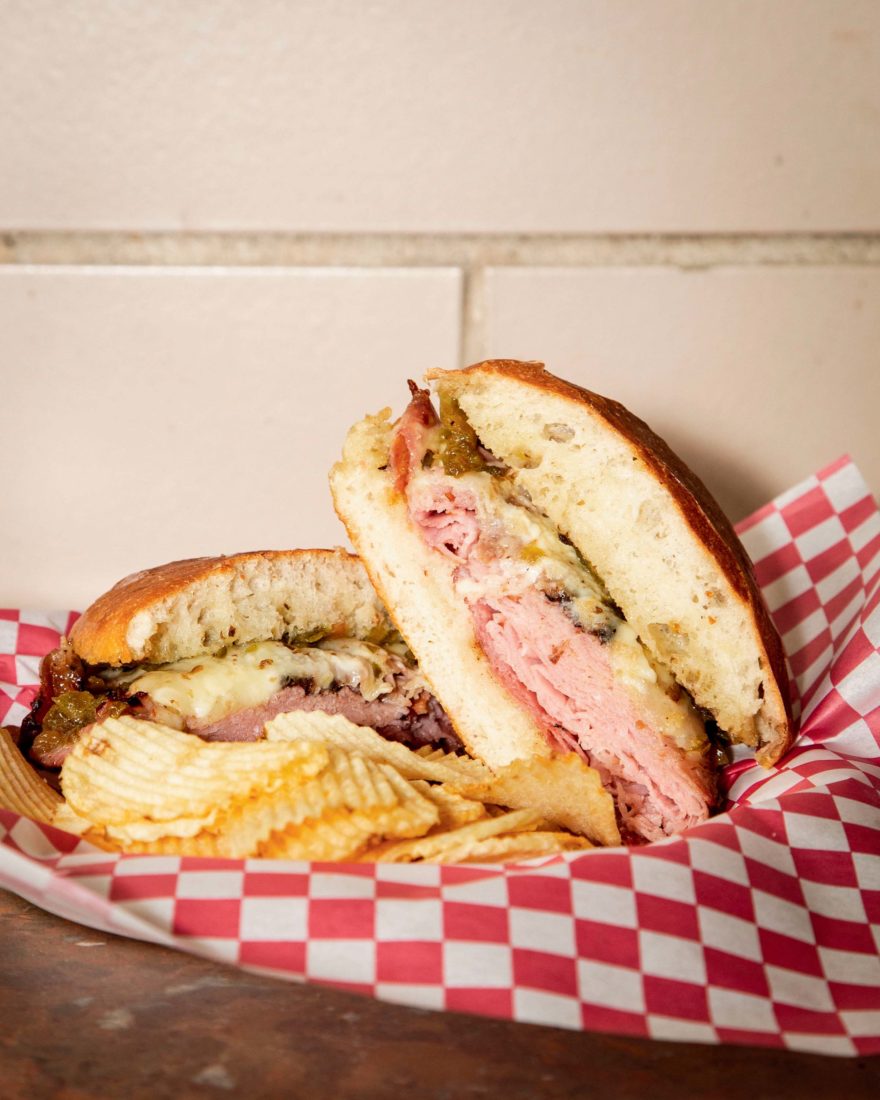Served on a crackly round of house-baked bread, layered with ham, salami, roast beef, provolone, and mozzarella, the muffuletta at Valle’s in Memphis is a baroque and sloppy beauty, leaking oil and vinegar and joy. A quiet man with a shy and impish smile, Louie Valle dresses his take on the New Orleans sandwich with mushrooms and green peppers, bound by what tastes like a homemade version of Wish-Bone Italian dressing. Presented on a foam plate with a handful of Ruffles, priced at seven bucks and change, it’s one of the most satisfying sandwiches I’ve eaten in the past decade.
That’s not how you’re supposed to do it, of course. Roast beef has no place in a classic muffuletta. Same with that mushroom-pepper relish. Born of Sicilian legacies, a proper version gets crowned with a mix of olives and pickled vegetables. Valle (pronounced “valley”), the owner of this family-run restaurant, tells me he developed the sandwich after a trip to New Orleans and a visit to Central Grocery, and he shares a confession: He likes the sandwich the grocery popularized, but he hates olives. Sometimes, genius is born of a problem with olives.

Foods come with time stamps. Smoked salmon and cream cheese pizzas taste like 1985, when California cuisine was in vogue. Foie gras–gorged burgers taste like 2001, when chefs were busy reinventing Americana. Tortas, stuffed with chorizo and avocado slices, taste like today, when great taquerias outnumber good barbecue joints. Louie Valle’s muffulettas, and his other sandwiches and pizzas, taste like 1977. That’s about the time Wish-Bone became a household name. That’s before Marcella Hazan taught America to cook polenta, and before Southerners began wondering how the ground corn she used was different from the stone-ground grits we already knew.
In 1975, the Valle family moved to Memphis from Akron. Seven children came with their parents. Two years later, just five months before Elvis left the building for the last time, Louie’s older sister Doris and her husband opened the restaurant in the Whitehaven neighborhood, naming it the Italian Rebel. In that moment the name sounded right, especially for a family of Italians from the North moving to the South. Around the corner from Graceland, a few miles from the Mississippi state line, the gabled brick building previously served as a fire station, a boxing arena, and an occasional haunted house. They served pizza, really good pizza, built on a sturdy crust, and sandwiches, stacked on that house-baked bread.
Louie Valle took over operations in 1983, expanding the menu and drawing regulars who played shuffleboard and drank beer and ate meatball sandwiches. The Italian Rebel was the place to gather after a softball game to listen to Springsteen records and eat casserole-style lasagna, whorled with ricotta and topped with mozzarella.

Today, Valle’s remains a family business. Louie’s sister Sue handles catering. His wife, Tammy, and son Vincent prep and cook. Daughters Elizabeth and Olivia work the front counter. Now open just for lunch three hours every weekday, they serve spaghetti twirled with tomato-paste red sauce. And that free-form lasagna. They stuff hoagie-style sandwiches with house-ground pork sausages and dress salads, tossed with iceberg and banana peppers, with house-made blue cheese or Thousand Island. Order a Rebel Combination for $10.95 and you get spaghetti, lasagna, a two-topping slice of pizza, and hard-toasted bread, buttered lavishly and showered with garlic powder.
If you don’t look too closely, Valle’s appears as if it hasn’t changed since 1977. That’s part of the appeal. But the restaurant founded as the Italian Rebel, now known as Valle’s, has changed along with the neighborhood.
Decorated in red, white, and green, the colors of the Italian flag, set with molded plyboard booths, and lit by a Michelob chandelier, the dining room had been presided over by a cartoon general in a gray uniform with gold epaulets and a gray kepi. Last summer, the family remade the uniform and cap into a chef’s jacket and hat, and they began referring to the restaurant by their family name, repainting most of the signage. When I ask Louie Valle why, he says, “If that name offends people, I don’t want to offend.” Empathetic and frank, his response shows why the restaurant draws men and women of many colors and backgrounds for weekday lunches.
Over the last four decades, Whitehaven has changed from a white middle-class suburb to a Black middle-class suburb, defined, in part, by its relationship to Graceland, the nation’s second most visited private home. Elvis borrowed from Black traditions to build his career. Now his home stands as a tribute to the enduring appeal of his music, and to the broad cultural debt that white musicians owe Black musicians. To that end, some Black residents now playfully and proudly refer to the neighborhood that surrounds Graceland as Blackhaven.
Long-tenured neighborhood restaurants are nostalgia portals. We return for the foods we loved and left behind, and to prove to ourselves that some institutions endure. As much as a great slice of pizza or an oddball muffuletta, that endurance is what I want when I cross the transom. Great restaurants inspire us because they suggest that we, too, might endure. But that doesn’t mean they will stay the same. Forty-plus years into its run, Valle’s looks and feels like a restaurant that will manage the next set of changes, to serve the next generation.








